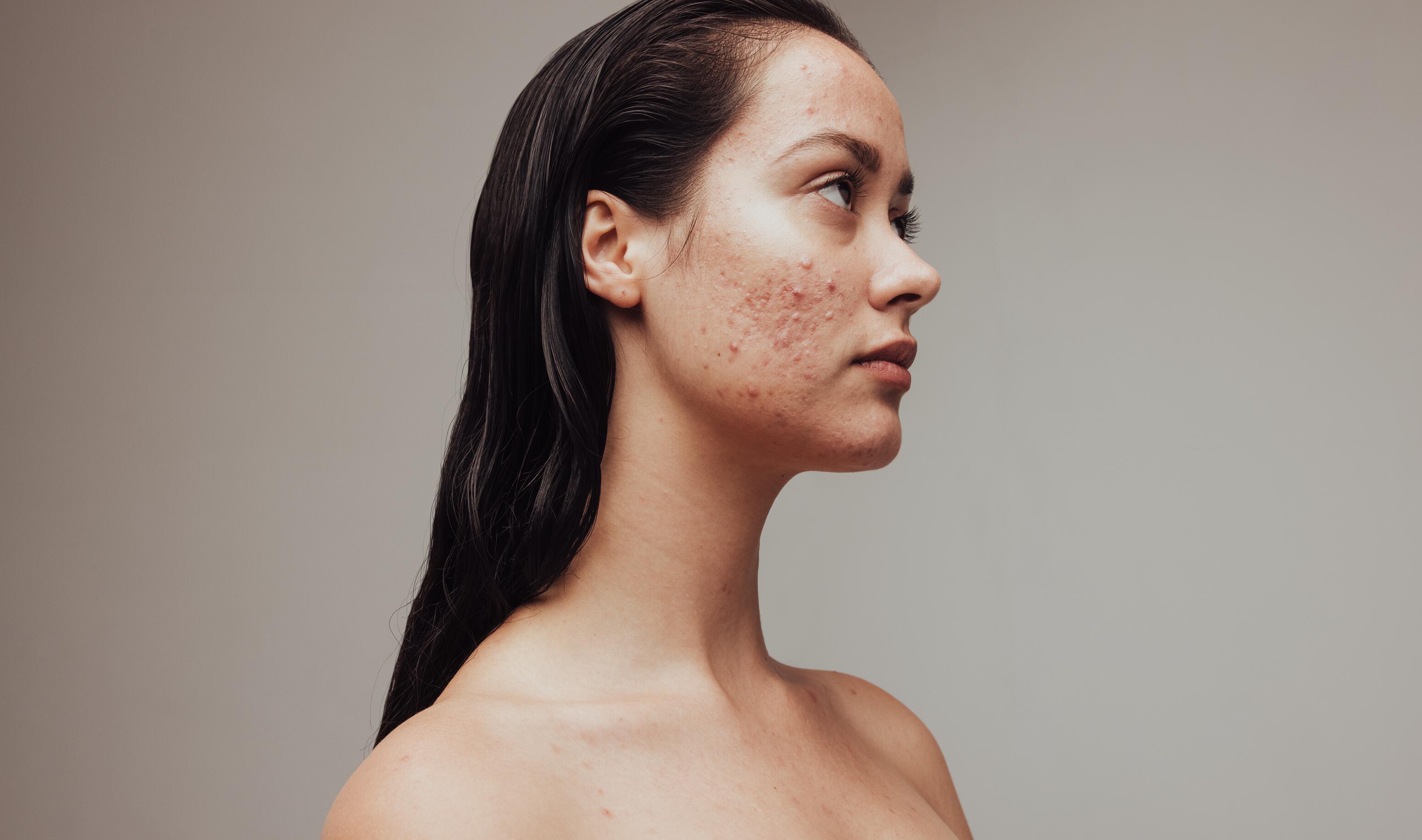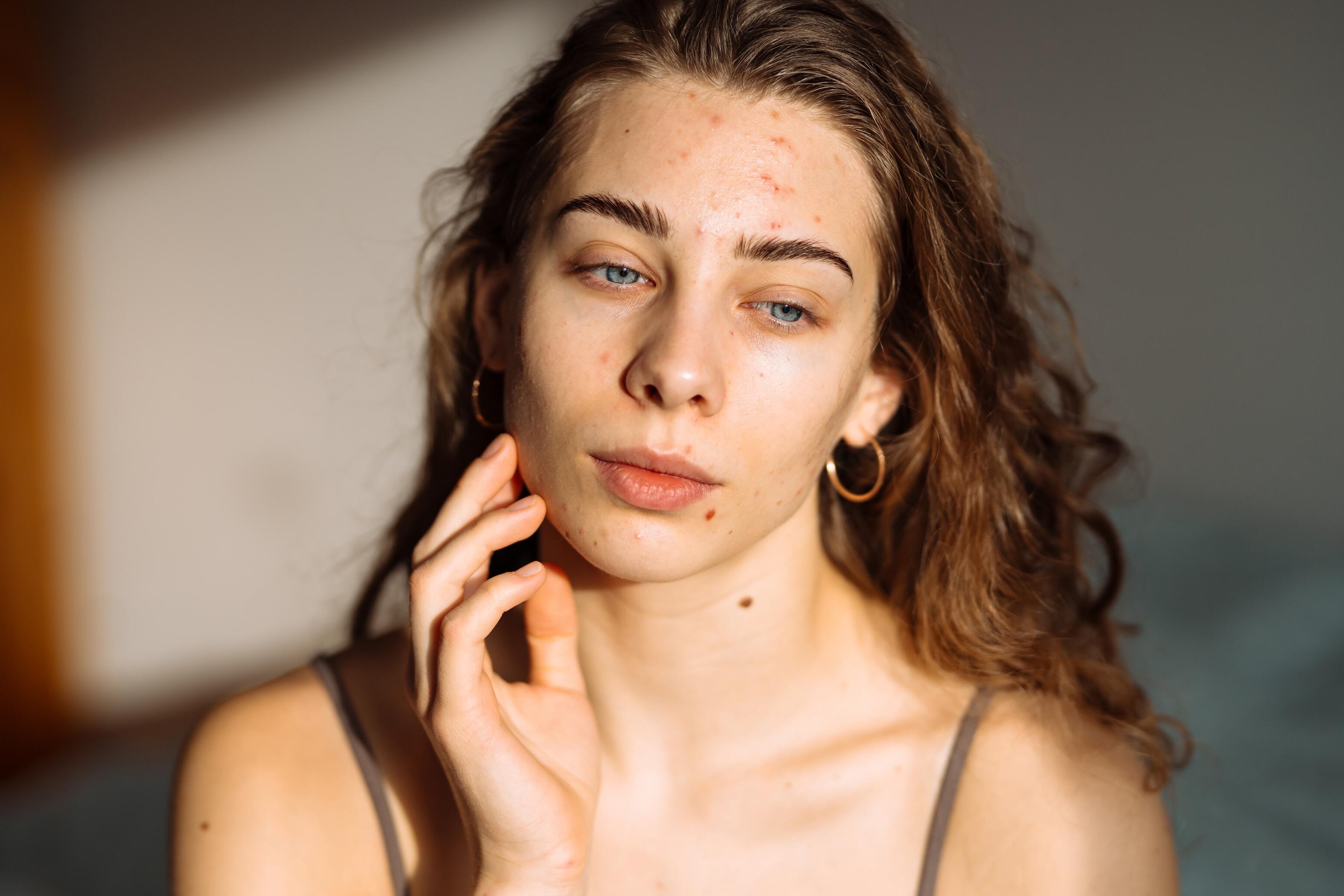All About Acne Scars and Their Treatments

Summary
Introduction to acne scars
Acne scars are permanent marks that form on the skin after acne episodes, especially when they are severe or poorly managed. They result from the body’s natural healing process, which, in trying to repair the damage caused by inflammation of the pilosebaceous follicles, may produce either an excess of tissue (forming hypertrophic scars or keloids) or insufficient tissue (leading to atrophic scars).
Scars can cause significant distress, affecting self-esteem and quality of life. Effective dermatological treatments are available to improve their appearance by reducing thickness and pigmentation, filling volume deficits in the skin, or restoring epidermal texture, thereby lessening the psychosocial impact of these marks. The treatment approach varies by scar type and severity, and often requires a combination of methods for optimal results.
The Different Types of Acne Scars¹ ²
Atrophic Scars
Atrophic scars result from dermal destruction due to cutaneous inflammation and inadequate repair, characterised by reduced or improper collagen production, causing skin depressions and loss of substance.
They are more common than hypertrophic or keloid scars:
- Ice pick scars: narrow (< 2 mm), deep, punctiform scars that account for 60–70% of atrophic scars. They feature a wider opening than their deep base, forming a “V” shape.
- Rolling scars: caused by abnormal attachments between the dermis and subcutaneous tissue, these are broad, “M”-shaped depressions with irregular edges, giving the skin an “orange peel” texture.
- Boxcar scars: round or oval with well-defined vertical edges, resembling chickenpox scars. They are wider at the surface than ice pick scars and do not taper to a point at the base. They can be shallow or deep (1.5–4.0 mm diameter) and have a “U” shape with a broad base.
It is common to find all three types of atrophic scars in the same individual, which can make differentiation challenging.


Hypertrophic Scars and Keloids
Hypertrophic scars and keloids arise from excessive collagen production and reduced collagenase activity.
- Hypertrophic scars are pink lesions confined to the original wound boundaries.
- Keloids form overgrown, raised masses of purple tissue that extend beyond the initial lesion. They are more common in darker skin types and typically develop on the torso.
Both can be difficult to treat due to their tendency to recur.
Post-Inflammatory Hyperpigmentation
Post-inflammatory hyperpigmentation is a darkening of the skin that persists after acne lesions heal. It is caused by excessive melanin production, often worsened by sun exposure, and more frequently affects people with darker skin types.


Post-Inflammatory Erythema
Post-inflammatory erythema manifests as persistent redness from capillary dilation in previously inflamed areas. It is more common in fair skin and can last weeks to months. Sun exposure may worsen these lesions, hence the need for adequate sun protection.
Causes of Acne Scarring¹ ²
Acne scars result from interconnected factors affecting the structure and function of the skin’s pilosebaceous units. Key mechanisms include:
Formation of Acne Lesions
Acne develops from:
- Increased and altered quality of sebum, becoming more viscous.
- Hyperkeratinisation of the pilosebaceous units, clogging the pores.
- Heightened activity of androgenic hormones.
- Proliferation of Cutibacterium acnes, triggering an inflammatory response.
The deeper and more inflammatory the lesions, such as nodules, cysts, or even abscesses, the higher the risk of scarring.
Scarring Process
Inflammation is a normal immune response that initiates lesion repair through a cascade of cellular and molecular events, which factors like sun exposure and lesion manipulation can exacerbate.
- Granulation tissue formation: following inflammation, damaged tissue is repaired and new capillaries form. Fibroblasts migrate and proliferate, producing collagen.
- Matrix remodelling: fibroblasts and keratinocytes reorganise tissue layers. An imbalance can lead to atrophic scars, if collagen production is insufficient, or to hypertrophic scars if the scarring response is excessive.
Aggravating Factors
- Lesion manipulation: excessive picking or squeezing can worsen inflammation and promote scarring.
- Sun exposure: accelerates inflammation and prolongs healing.
- Inadequate or delayed treatment: late or unsuitable acne therapy increases the risk of scarring.


Treatments and Solutions for Acne Scars¹ ² ³
Many medical, dermatological, and surgical treatments are available for acne scars. They should be tailored individually and may be combined.
Skin Resurfacing
These treatments target superficial skin layers to stimulate regeneration and reduce scar appearance:
- Chemical peels: use chemical solutions to exfoliate dead cells and promote their renewal.
Indications: boxcar and rolling scars. - Dermabrasion/microdermabrasion: mechanical exfoliation of the upper epidermis and upper dermis (dermabrasion) or superficial epidermis (microdermabrasion) to smooth shallow scars.
Indications: boxcar, rolling, and superficial ice pick scars. - Laser therapy: removes or ablates the superficial skin layer or stimulates collagen production in deeper layers.
Indications: ice pick, rolling, boxcar, and hypertrophic scars. - Microneedling: creates micro-perforations with fine needles to stimulate collagen and elastin production.
Indications: rolling, boxcar, and mild hypertrophic scars.
Reconstructive Techniques
These methods alter scar structure to improve skin appearance:
- Chemical reconstruction of scars (CROSS technique): applies high-strength trichloroacetic acid directly into deep ice pick scars to stimulate collagen.
- Punch excision and elevation: surgical removal of atrophic scars followed by suturing of healthy skin edges.
Indications: ice pick and narrow boxcar scars. - Subcision: uses a needle to sever fibrotic attachments between the dermis and subcutaneous tissue.
Indications: rolling scars.
Filling Techniques
These treatments add volume under scars to make them less visible:
- Autologous fat grafting and fillers: inject the patient’s own fat or hyaluronic acid under scars to level the skin.
Indications: rolling and boxcar scars. - Skin grafting: transfers skin from another body area to fill depressed scars.
Indications: rolling and boxcar scars.
Other Treatments
- Corticosteroid injections: reduce inflammation and flatten hypertrophic scars and keloids.
- Cryotherapy: shrinks hypertrophic scars and keloids with extreme cold.
- Radiofrequency: uses radio waves to heat deep skin layers, promoting collagen remodelling.
Indications: rolling, boxcar, ice pick, and mild hypertrophic scars. - Topical retinoids or alpha-hydroxy acids (AHAs): Promote cell turnover and reduce scars by accelerating exfoliation and improving skin texture.
Indications: superficial atrophic scars.
Tips to Prevent Acne Scars⁴
Importance of Early Acne Treatment

Early management of acne controls inflammation, reduces lesions, and minimises scarring. See a dermatologist for personalised therapy tailored to your skin type and acne severity. Regular follow-up allows for treatment adjustments to achieve the best results.
Avoid These Actions
Refrain from picking, squeezing, or puncturing spots to prevent scar formation. Such actions heighten inflammation, encourage bacterial growth, and cause deeper lesions likely to scar. Also, avoid harsh or irritating products that can worsen acne and increase the risk of scarring.


Sun Protection
Sun exposure can worsen existing acne and increase the pigmentation of scars. Cover up and use a daily broad-spectrum sunscreen with an SPF of 30 or higher, even on cloudy days. Choose non-comedogenic formulas designed for acne-prone skin to avoid further pore blockage.
Recommended Dermocosmetic Products
Select non-comedogenic cleansers and moisturisers specially formulated for acne-prone skin to minimise pore obstruction and new lesion development.
Sources:
1. Fabbrocini G and al. Acne scars: pathogenesis, classification and treatment. Dermatol Res Pract. 2010;2010:893080.
2. Connolly D and al. Acne Scarring-Pathogenesis, Evaluation, and Treatment Options. J Clin Aesthet Dermatol. 2017 Sep;10(9):12-23.
3. Jfri A and al. Acne Scars: An Update on Management. Skin Therapy Lett. 2022 Nov;27(6):6-9.
4. Jegou-Penouil MH. L’acné. Maladie du follicule pilo-sébacé. Société française de dermatologie. 2019 Dec. [Internet]. https://dermato-info.fr/fr/les-maladies-de-la-peau/l%E2%80%99acn%C3%A9
- Discover Retention Acne: A Guide to Effective Care and Solutions
Retention Acne: A Guide to Effective Care and Solutions
- Discover Acne and Sun Exposure: Effects and Recommended Actions
Acne and Sun Exposure: Effects and Recommended Actions




